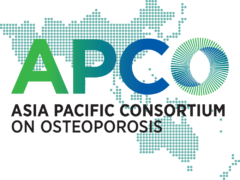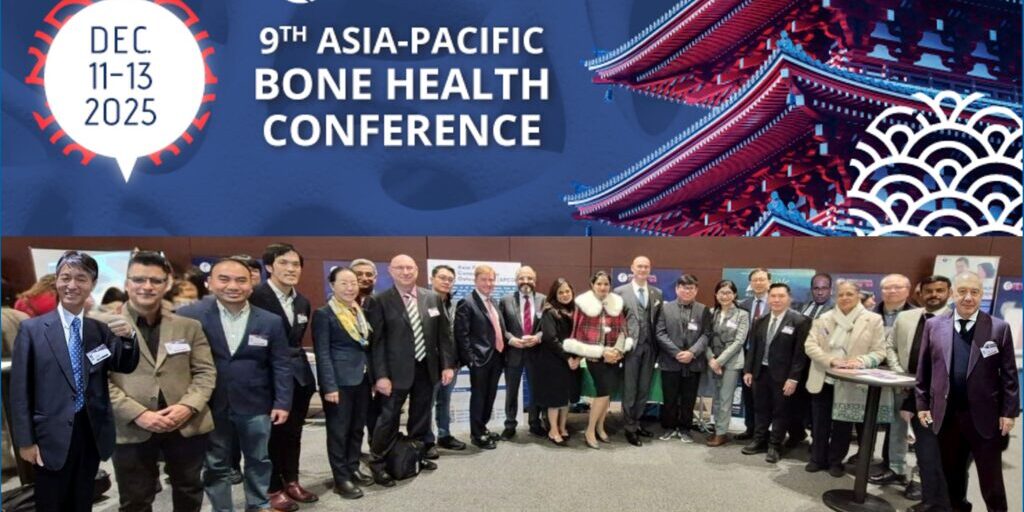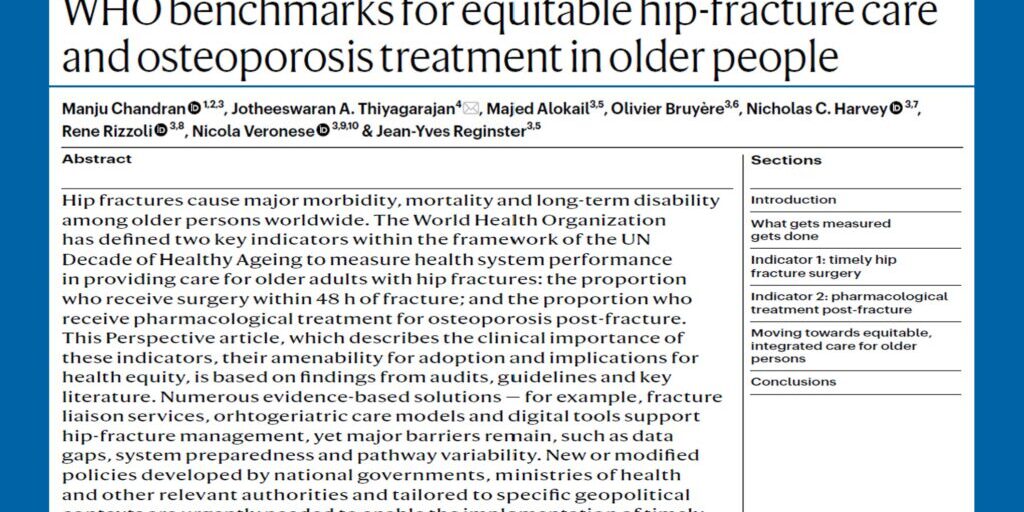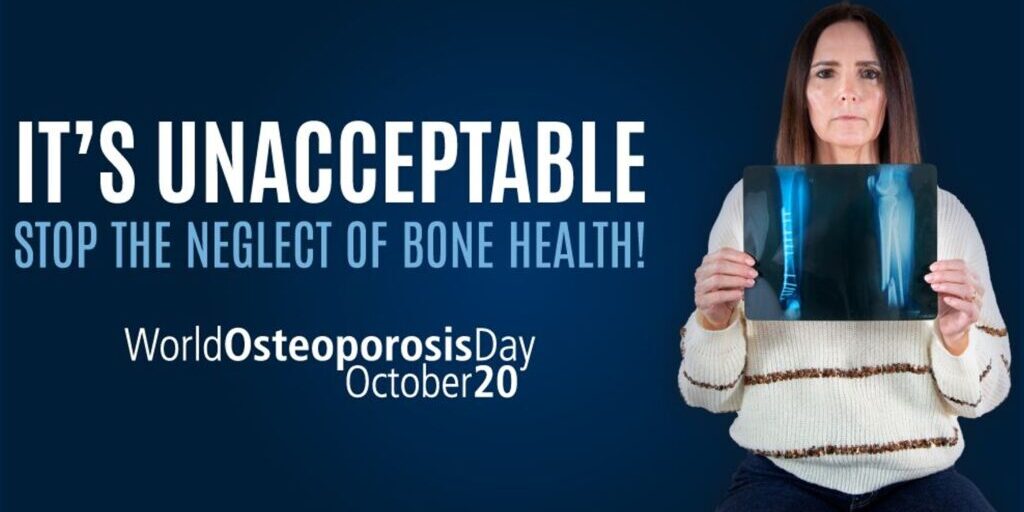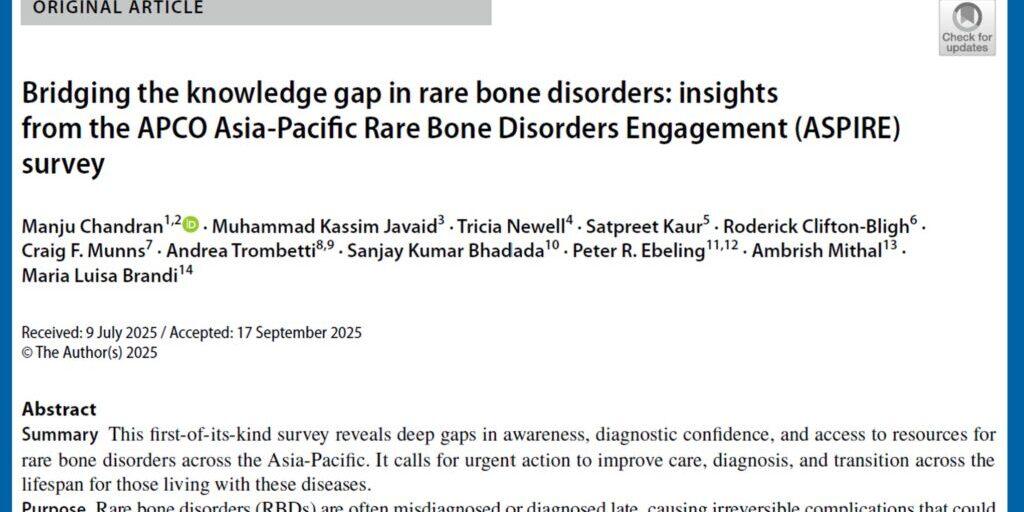On 6 November 2025, Nature Reviews Rheumatology published an important Perspective titled “WHO benchmarks for equitable hip-fracture care and osteoporosis treatment in older people.” Led by Prof Manju Chandran, Chairperson of the Asia Pacific Consortium on Osteoporosis (APCO), this paper marks a major milestone for the global bone health community.
As populations age at unprecedented speeds, hip fractures have become one of the most serious and costly consequences of osteoporosis. Yet despite decades of research and the availability of proven treatments, the quality of hip-fracture care remains inconsistent across and even within countries. The new WHO benchmarks spotlight a simple truth: older people everywhere deserve timely, evidence based, and equitable care, and we now have a clear framework to evaluate whether systems are delivering it.
Why Hip-Fracture Care Needs Benchmarking
Hip fractures are life altering injuries. For older people, they often lead to permanent disability, loss of independence, and, in many cases, premature mortality. What’s most striking is that these outcomes are not inevitable; they are strongly influenced by the quality of care delivered in the first hours, days, and months after the fracture.
Yet across the world, large gaps persist. Many patients wait far too long for surgery. Even more never receive osteoporosis treatment after the fracture, leaving them at high risk of another, potentially more devastating, break. Without consistent data or clear standards, health systems struggle to evaluate their performance or make meaningful improvements. The WHO benchmarks introduced in this paper aim to change that.
The Two WHO Benchmarks: Simple, Actionable, and Powerful
The Perspective highlights two core indicators that the WHO recommends for assessing health system performance in older persons who suffer hip fractures:
- Timely surgery
Prompt surgery is one of the strongest predictors of survival and recovery after a hip fracture. Evidence shows that delays increase the risks of complications such as infection, blood clots, and prolonged immobility, all of which worsen long-term outcomes. By tracking the proportion of patients who receive surgery within 48 hours, health systems can identify bottlenecks, address resource constraints, and ensure that emergency, orthopaedic, and geriatric services are aligned. - Osteoporosis treatment after a hip fracture
A hip fracture is rarely an isolated event. It is often a warning sign of underlying osteoporosis, and without treatment, the chances of suffering another fracture, often within months, are extremely high. Measuring the proportion of hip-fracture patients who are started on appropriate osteoporosis medication helps ensure that fracture prevention does not stop at the operating room. It also encourages the adoption of proven models such as Fracture Liaison Services (FLS), which are specifically designed to close this critical treatment gap.
Why These Benchmarks Are so Important
- They shift focus from “can care be provided?” to “is care actually being delivered?”
Many countries have clinical guidelines for fracture care and osteoporosis treatment, but implementation is highly variable. These benchmarks move the conversation from theoretical recommendations to measurable, real-world performance. - They promote fairness and equity
Older people in rural areas, under-resourced hospitals, or low-income settings are often at the greatest risk of delayed surgery and missed osteoporosis treatment. Benchmarks expose disparities and provide a basis for targeted system-level action. - They are globally applicable
Unlike complex quality indicators that require advanced health IT systems, these two benchmarks are straightforward, feasible, and meaningful across diverse health system contexts. - They strengthen the link between acute care and long-term bone health
The paper reinforces an essential message: a hip fracture is both an emergency and a chronic disease management issue. Good care must include not only skilled surgery but also long-term strategies to prevent future fractures.
Barriers Identified and Why This Paper Calls Us to Act
The authors highlight several barriers that still prevent consistent delivery of high quality hip-fracture care:
- Data gaps: Many countries lack reliable systems to track fracture incidence, surgical timing, or osteoporosis treatment rates.
- Health system unpreparedness: Variability in resources, training, and coordination leads to inconsistent care delivery.
- Limited adoption of FLS and orthogeriatric models: Despite their strong evidence base, these services are not yet widely implemented.
- Equity issues: Socioeconomic, geographic, and demographic factors strongly influence access to timely care.
By presenting benchmarks and outlining the steps needed to adopt them, the paper calls on governments, policymakers, and health leaders to make hip-fracture care a priority not just clinically, but structurally.
Why This Matters for the Bone Health Community in Asia-Pacific
The Asia-Pacific region is experiencing one of the fastest rates of population ageing in the world. As life expectancy rises, hip fractures are increasing rapidly across countries such as Singapore, Japan, China, Australia, India, and many others in the region. This means the burden of osteoporosis and its consequences is growing much faster here than in most other parts of the world.
Despite this rising need, hip-fracture care across Asia-Pacific remains highly variable. Some countries have well established orthogeriatric pathways and Fracture Liaison Services (FLS), whereas others still face significant challenges such as delays in surgery, under-diagnosis of osteoporosis, limited access to treatments, and gaps in post-fracture follow-up. These inequalities mean that older adults with similar fractures often receive very different levels of care depending on where they live.
This is why the WHO benchmarks are so crucial for the region.
- They provide a common, clear standard that every health system, regardless of size, resources, or maturity, can aim for: timely surgery within 48 hours and appropriate osteoporosis treatment after the fracture.
- They make performance visible, enabling countries to measure how well they are caring for their older citizens and where improvements are needed.
- They align directly with APCO’s mission to raise the standard of osteoporosis care across Asia-Pacific by promoting consistent, evidence-based practices.
- They support advocacy efforts by giving clinicians, researchers, and policymakers a straightforward set of indicators to present to health ministries, hospital leaders, and funding agencies.
- They help reduce inequities by ensuring that high-quality hip-fracture care is not limited to a few advanced centers but becomes a regional expectation.
For APCO and the wider bone health community, these benchmarks offer a powerful tool to accelerate system-level reforms, strengthen regional collaboration, and ensure that older adults in Asia-Pacific receive the care they need urgently, consistently, and equitably.
Read the Full Article
“WHO benchmarks for equitable hip-fracture care and osteoporosis treatment in older people”
Published in Nature Reviews Rheumatology, 6 November 2025
https://www.nature.com/articles/s41584-025-01319-5
